Lab-grown Diamonds or also known as man-made diamonds are an evolutionary and sustainable alternative to Real Diamonds. These Diamonds are made by a procedure similar to the one that happens under the earth but inside a lab using plasma reactors to imitate the high heat and pressure under the earth to make high-quality diamonds whenever you like.
These diamonds have same chemical, physical and optical property as of natural diamonds. It has same hardness and lifespan as Mined Diamonds. Our Lab Grown Diamonds are certified by GSI Lab (Gemological Science International) or Treasta on the basis of cut, color, clarity and carat and other aspects just like they do for Mined Diamonds. It is a more time-convenient way to produce diamonds as compared to mining diamonds. Hence, the cost of the jewelry made using these Diamonds is far less as compared to Real Diamonds.
It’s important to know everything about a Diamond before you buy one. We are here to help you with the basics of buying Diamond jewelry and also getting the best value for money.
There is a common confusion between shape and cut. But, they are two different things that determine how the diamond looks. The shape is a basic symmetry such as round, square or triangle, whereas the cut defines the specification of how well the diamond looks (ideal, excellent, very good.)
For any jewelry, you wish to buy, people usually have a shape preference depending on how it looks on them. Here are some detailed tips on how the shape changes the way your jewelry looks on you.
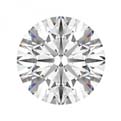
It is the most preferred type of shape as it has maximum symmetry and also gives max shine. It also works well with any type of mounting from classic solitaires to modern unique designs.
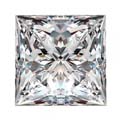
This shape is the second most preferred shape. This cut has the brilliance of the round shape and has the step cut of the emerald cut with triangular facets of the brilliant-cut. It’s most distinguishing feature is the sharp right-angle corners with an upside-down pyramid beneath the surface of the stone. This is a perfect choice if you want the brilliance of the round shape in a square shape. Since a large amount of uncut diamond is used, it is comparatively less expensive than other shapes in the comparable carat weight range.
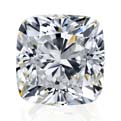
This cut comes in a square or a rectangular shape with 58 brilliant facets resembling a pillow. Hence the name, “Cushion”. This shape is also known as “Antique style of cut” based on the “Old mine cut” that was developed a century ago. Since it looks amazing with any fitting and the facets are customizable, this shape is a favorite of many stylish women.
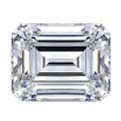
It is the most common cut and its basic shape is a rectangle. The clean parallel lines of this cut are the result of step cutting of parallel facets. It usually has cut (blocked) corners. The length of the stone is usually 1½ of the width of the stone. This is the correct way to cut the emerald. There is a variation of this cut called the square emerald, which looks similar to the Asscher cut. It fits best for people who have a standout personality and style to match. This is also famous for its fuller look when compared to other shapes of carat range.
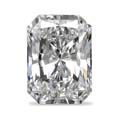
This shape’s basic shape is similar to the emerald cut with the length to width ratio being 1:5:1. Similar to the Emerald cut, Radiant is identified with the cut corners. This cut has the brilliance of the round or princess cut with facets in the triangular shape combined with the step cut of the emerald.
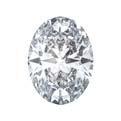
Standing true to its name combined with a brilliant-cut, this shape is an amazing way to create an illusion of long slender fingers. The ratio that works best for an oval shape is 1.33 and 1.66. It has 56 facets that display a visible bow-tie.
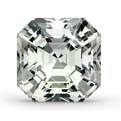
This cut is also known as square emerald. With the cut corners, the stone appears almost octagonal. The defining part of this shape is the bottom of the diamond called the pavilion. It has a scissor-cut with all the facets step-cut downwards to the culet.
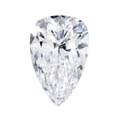
It represents a teardrop. It is a more feminine shape with a round bottom and a tapering end. Since it has a slender look to itself it also makes the fingers look more slender depending on the elongation of shape. It can be worn pointing towards the fingernails or the palm or even sideways.
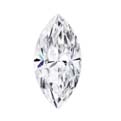
This is an elongated shape of a diamond with its both ends tapering. It appears flat from the top and makes the fingers appear flat and slender. Along with this, it gives the cutter to maximize carat weight for a fuller looking diamond.
Carat is one of the 4 Cs that defines the quality of the diamond. Carat weight is the measurement used for defining the size of the Diamond. A 1-carat diamond is 200 milligrams or 0.2 grams in weight. When it comes to buying engagement rings people tend to go for 1CT diamonds for the big size. But, we have a smarter solution. You could go down 0.11CT carats and save over thousands of dollars on buying a 0.89CT diamond.
This does not affect the size of the diamond at all and still looks fuller. To add to this, the cost and quality of a diamond is not completely dependent on the carat but is inclusive of all the 4 Cs (Carat, Cut, Clarity, and Color)
The cut is another part of the 4 Cs that determines the quality and style of the diamond. It greatly influences the appearance and the price.
It doesn’t refer to the shape of the diamond but about the diamond’s symmetry, proportions, and polish. The positioning of a diamond’s facets is based on the type of cut which highly modifies the appearance of a diamond. To achieve brilliance, the cutter has to choose a rough diamond depending on the shape and the number of facets.
The main goal of cutting a diamond is to create the following visual effects when a diamond interacts with light:
| BRIGHTNESS | White light that reflects internally and externally in a Diamond. |
|---|---|
| FIRE | Dispersing of white light into rainbow colors. |
| SCINTILLATION | A pattern of white and dark due to the reflections within the diamond. |
| GRADING SCALE | The laboratories check the type of cut and its proportions in weight to breadth, girdle thickness that affects the durability of the diamond, type of cut and how symmetrical the facets are. |
We at Treasta use a standardized scale while pricing our jewelry.
Here’s a generic idea of how different types of cuts change the appearance of the diamond and it’s interaction with white light.
| IDEAL | This cut is rare and reflects all the white light that falls on the diamond. Expensive. |
|---|---|
| EXCELLENT | This reflects almost all light that falls on the diamond, like an ideal cut. Affordable and desirable. |
| VERY GOOD | Reflects most of the light and is priced less as compared to ideal. |
| GOOD | An acceptably good quality of cut. But doesn’t the brilliance of the ideal cut. |
| POOR | It is either cut deep and narrow or shallow and wide. Treasta makes sure that you get quality diamond jewelry, and hence stray away from poor-cut diamonds. |
What’s best for you?
If you are new to buying diamonds then you need to know that, buying a diamond with a high-graded cut. This gives you the space to go low on clarity and color. Along with that, ideal and excellent cut, it’s easy to maximize the carat weight. The highest cut grade that fits in your budget is the best for you. It may be costly as it takes time and skill to match the high-grade cutting. Poor cut diamonds have black spaces that leak the internal light making it appear darker.
Clarity is another parameter to keep in mind while buying diamond jewelry. It defines the purity of the diamond. The diamonds are viewed under special microscopes and 10x magnification loupe. The scale: The diamonds are viewed under a microscope and checked for blemishes. The following table lists the criteria of how a diamond’s clarity is graded.
| FULL MEANING | CODE |
|---|---|
| INTERNALLY FLAWLESS | IF |
| VERY VERY SLIGHTLY INCLUDED | VVS1 / VVS2 |
| VERY SLIGHTLY INCLUDED | VS1 / VS2 |
| SLIGHTLY INCLUDED | SI1 / SI2 / SI3 |
| INCLUDED | I1 / I2 / I3 |
There is a deep-rooted thought that one must buy diamonds with high clarity like the ones from Flawless to VS. But we feel that you can go as low as I1 depending on the shape and cut of the diamond. With an SI clarity diamond, you still get a diamond that looks clean to the naked eyes.
The color of a diamond refers to the presence of the yellow or brown tint in the Diamond. Usually, all high-grade diamonds are colorless and near-colorless. The color of the diamonds is noted by letter grades starting from D to Z with D being completely colorless and Z having a brown tint.
The table here shows the letter grades and the range of color of the diamonds.
| D, E, F | COLORLESS | Expensive Diamonds. Icy white look. Worth the cost. Completely colorless |
|---|---|---|
| G, H, I, J | NEAR COLORLESS | Slight yellow ting. Requires profession gemologist to identify this. Good value for money as compared to Colorless Diamonds. |
| K, L, M | FAINT | When compared to high color grade diamonds the yellow color is noticeable. We don't sell diamonds less than K unless requested. |
| N-R | VERY LIGHT | The yellow tint is evident even to an untrained eye. Poor quality diamond. |
| S-Z | LIGHT | Brown tint. Negligible demand for these diamonds in the market. |
The diamonds that give value for money when you’ve selected a high-quality cut in the range of ideal or excellent, is from G to J.
